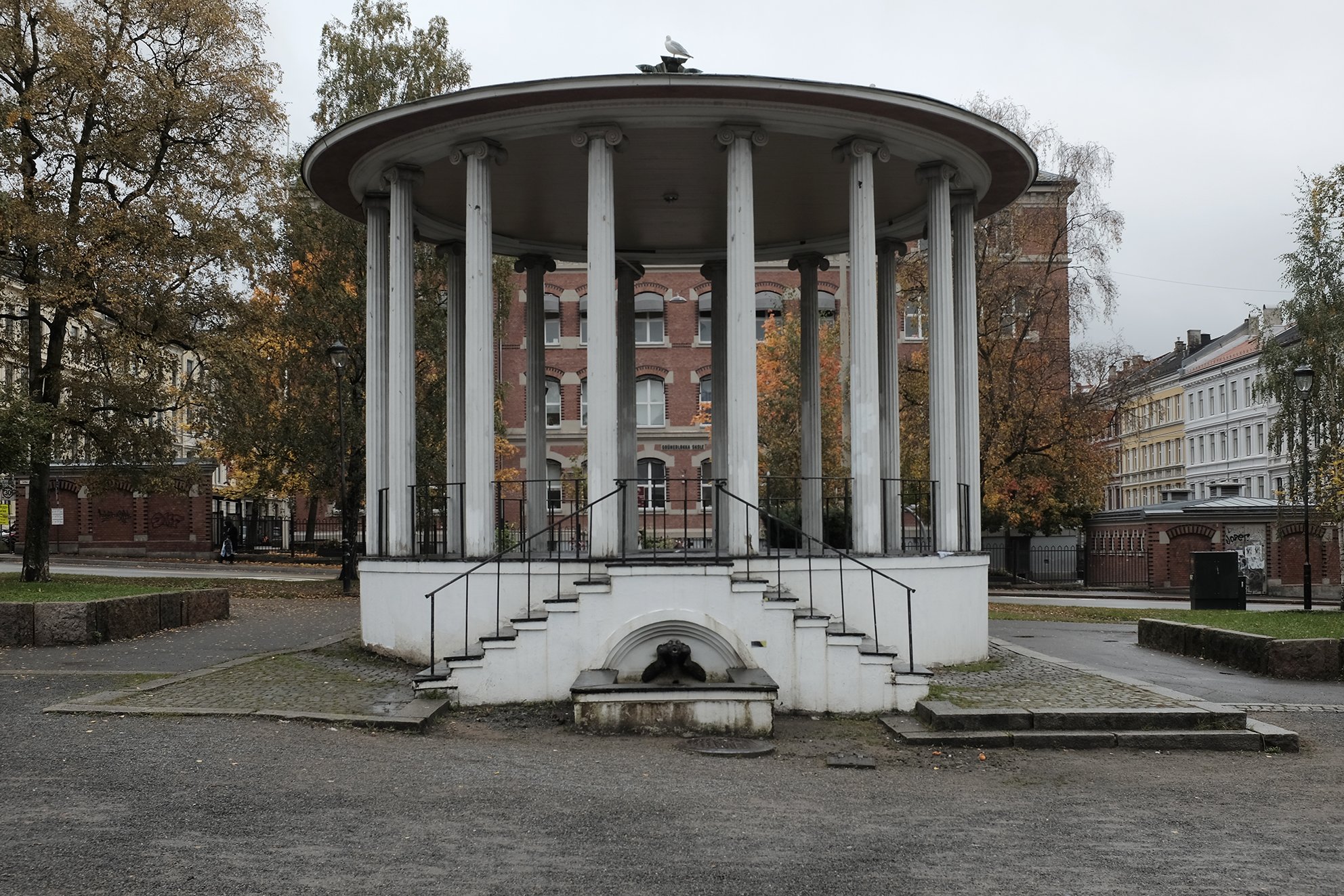MARKET
Birkelunden, Oslo 2024.
In June 2023 during a residency in Wrocław, I walked around the local Sunday marketplace and found myself being surrounded by still lifes loaded with symbols and references. Boxes full of crucifixions neighboured canvas covered with naked Barbies. These still lifes stood out against the chaos of the flea market.
The random encounter of crucifixions and Barbies reminded me of the home I grew up in. In their wish to decorate the house, my parents – like many others in Belarus – displayed side by side crucifixions, icons, knives, painting reproductions, ceramics, dolls, statuettes, and other souvenirs. This clash of objects and the ideologies they represent resonated with my research on collective identity and became the starting point for the Market installation.
Originally the “market” (ἀγορά / agorá in Greek), in addition to being a trading place, functioned as a forum were political and social issues were addressed and discussed – and as such a symbol of democracy. From this twin function of agora as both a commercial and political gathering space came the two Greek verbs: ἀγοράζω “I shop” and ἀγορεύω “I speak in public”.
Market brings those two activities that have largely been dissociated back together. Hence, it opens up the possibility to re-politicize markets and consumption – specifically here, fashion consumption. Using red lipstick as a fashion signifier, mirrors as a trope, and performativity as a stratagem, Market interrogates fashion and politics, where consuming fashion become part of a wider political engagement.
Market is a dialogic intervention that establishes a connection between the original conceptual meaning of the marketplace (that is, the dual function of the ancient Greek agora) with the site of Birkelunden (“birch grove” in Norwegian), its architecture (the music pavilion and Paulus church) and art in public space (the expressive Water Spewer by sculptor Gunnar Janson), as well as its social and political history. Birkelunden used to be a gathering place for workers’ movements in the early 20th century, holding speeches and music concerts. Not least, one of the few bric-à-brac markets in Oslo has been held at Birkelunden every Sunday since 2003.
In the context of Critical Fashion Walk, Market underlines how fashion, like capitalism and Christianity, is an ideological construct, where signs supersede clothing items and accessories (Roland Barthes, The System of Fashion). I am interested in the mythological dimension of fashion and how it is mediated through image-making. This exposes fashion as a spectacle fuelled by commodity fetishism in the words of Guy Debord (The Society of Spectacle), and questions in turn contemporary myth-production.
Agora is a symbol of democracy, the dominant political system in the global North. In my work I investigate contemporary democratic processes and, in particular, how new ethical and aesthetical norms are negotiated on the Internet, today’s agora. Like the ancient marketplace, the web is a site for trade, information circulation, and the formation/affirmation of political opinions.
In the light of the on-going wars, Market asks: Is democracy and its associated values and beliefs outdated, ready to be sold at a discount on market stalls? Or are they to be circulated further, re-appropriated, and given new life?
For Critical Fashion Walk. Initiated by: Johanna Zanon.
Participants: Aliona Pazdniakova, Ida Falck Øien, Klaus Nathaus, Sara Skogøy, Tone Rasch.
In collaboration with ROM and Salgshallen.
Supported by Kulturrådet.
Documentary photos from Birkelunden, October 2024
Birkelunden view, Music Pavilion, "The water spewer" sculpture by Gunnar Janson, Paulus Church with a post-functional architecture element - empty fountain turns into a social spot for gathering, Flea-market, Architectural meeting of Antiquety and Christianity.
My mythologic glossary:
Barbie: an iconic fashionable toy. Meant as a symbol of female strength and liberation, it became a measurement for beauty standards and conformity, turning women empowerment into a commodity that perpetuates gendered consumption and reinforces the patriarchy.
Birch: a symbol of renewal and rebirth in several different cultures.
Crucifixion: the ultimate symbol of Christian belief, sacrifice, and atonement. A method of capital punishment.
Mirror: a symbol of self-reflection, portal to other realities, and metaphor for truth and illusion. Also associated with vanity and beauty.
Red lipstick: a symbol of power, rebellion, and femininity. Originally a symbol of fertility. From the beginning of 20th century, a feminist symbol of women´s struggle for their rights.
Critical Fashion Walk, Birkelunden, 17.10.24
Critical Fashion Walk, Birkelunden, 31.10.24





















